GAN Technology: Powering the Future of AI Creativity

Introduction to GANs
Generative Adversarial Networks (GANs) are a revolutionary development in artificial intelligence (AI) that have reshaped the boundaries of creativity and technology. First introduced by Ian Goodfellow and his team in 2014, GANs represent a novel approach to machine learning by employing two neural networks—a generator and a discriminator—that compete against each other in a zero-sum game. This dynamic enables GANs to generate highly realistic content, from stunning images to lifelike videos and even audio.
GANs matter because they empower machines to not only analyze data but also create it. This shift from analysis to generation has opened doors to applications in industries such as entertainment, healthcare, gaming, and beyond. At the heart of tools like DragGAN AI, GAN technology allows for intuitive, flexible, and incredibly precise image manipulation that was previously unattainable.
How GANs Work
Two Neural Networks in Action
GANs operate through the interplay of two distinct neural networks:
- Generator: This network generates synthetic data by attempting to mimic real-world data. Its goal is to create content so realistic that the discriminator cannot distinguish it from genuine data.
- Discriminator: This network evaluates the content produced by the generator and determines whether it is real or fake. It provides feedback to the generator, enabling iterative improvements.
The Adversarial Process
The generator and discriminator are locked in a continuous feedback loop. The generator’s objective is to outsmart the discriminator, while the discriminator’s task is to become better at identifying fake data. Over time, this adversarial training results in the generator producing content that is indistinguishable from real-world data.
Visualization of GANs
A simple analogy: imagine a student (generator) forging paintings and a teacher (discriminator) trained to detect forgeries. The more the student practices, the better they become, eventually creating paintings so authentic that even the teacher is fooled. Visual aids, such as diagrams or animations, can further simplify this concept for users unfamiliar with neural networks.
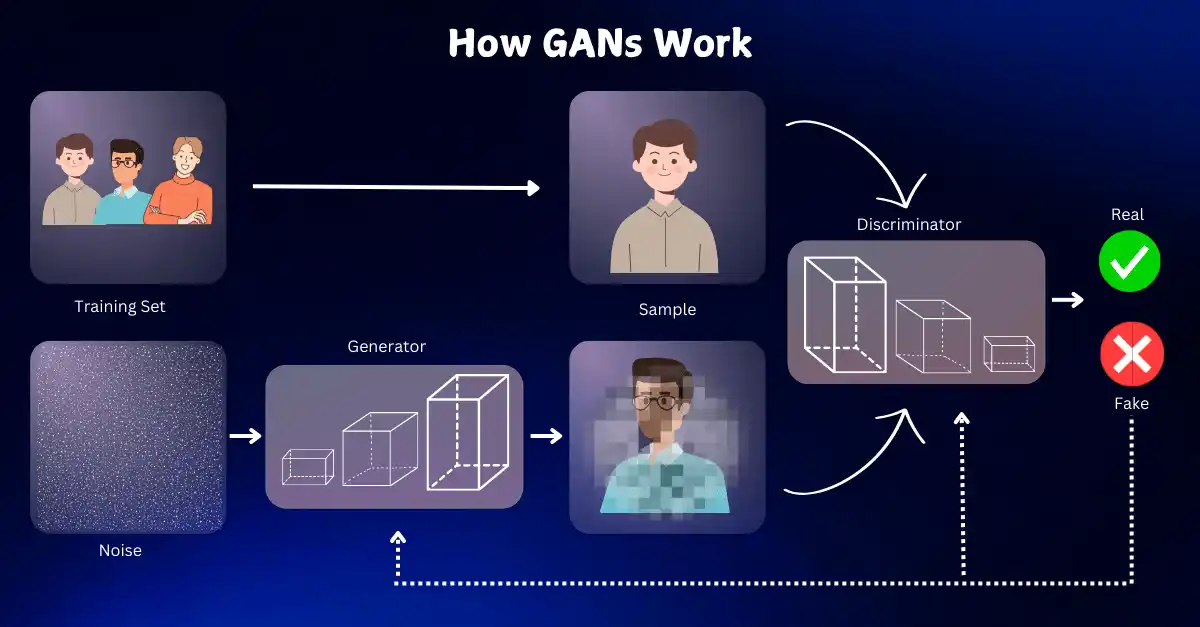
GAN Applications
GAN technology has found its way into various domains, each showcasing its transformative potential:
Image and Video Editing
GANs are extensively used in enhancing images, repairing old photos, and creating videos. DragGAN AI exemplifies this by allowing users to manipulate image details effortlessly, such as adjusting poses or reshaping objects.
Content Creation
From generating unique game assets to creating digital art, GANs provide unparalleled creative freedom. Artists and designers use GANs to experiment with new styles and concepts.
Medical Imaging
GANs play a vital role in healthcare by generating high-quality medical visuals for diagnostics. They assist in enhancing MRI scans, detecting abnormalities, and even simulating disease progressions.
Other Domains
GANs have applications in:
- Fashion (designing apparel or accessories)
- E-commerce (creating product images)
- Entertainment (generating special effects or animating characters)
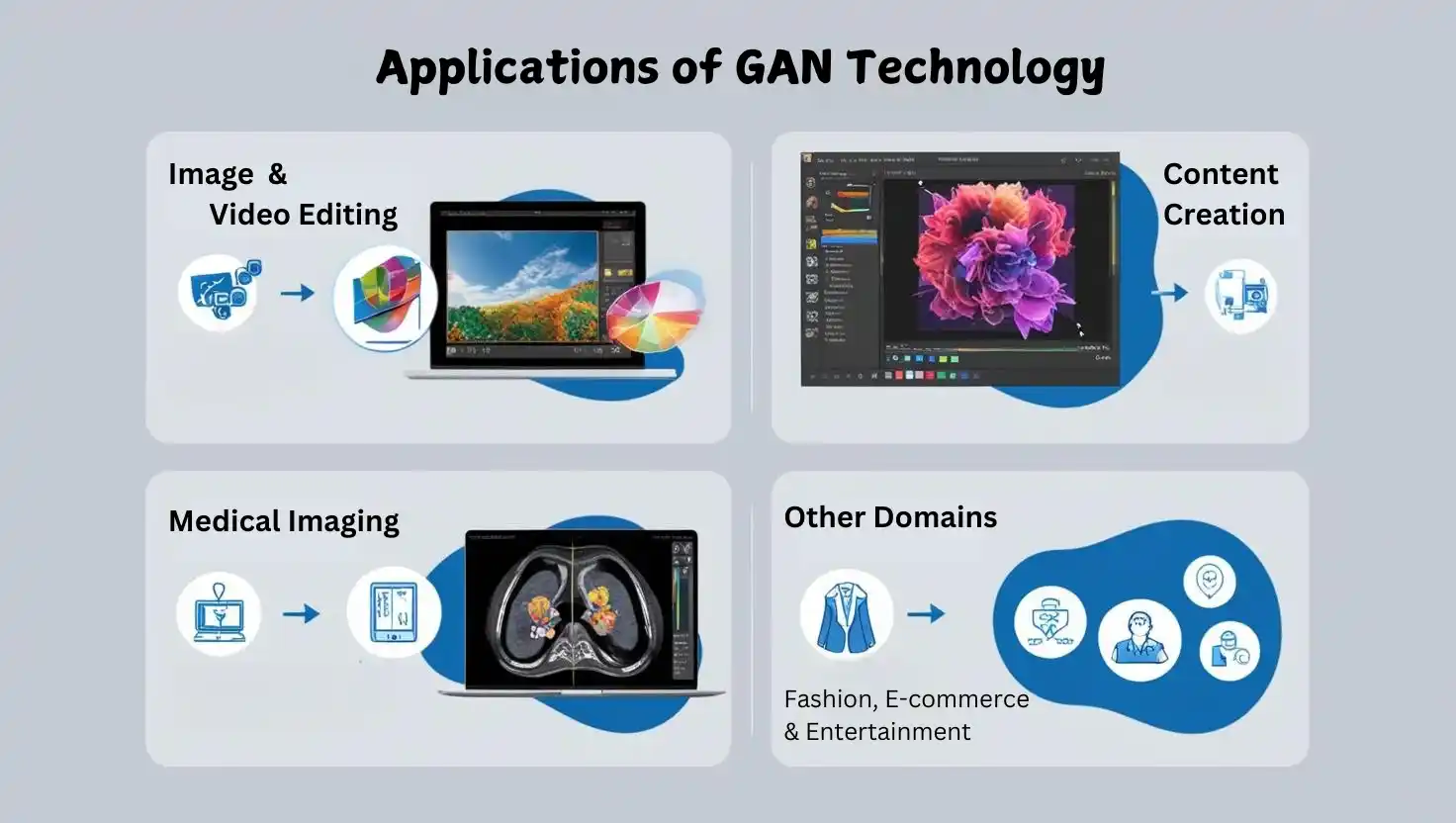
GAN Variants
GANs come in several flavors, each tailored to specific tasks:
DCGAN (Deep Convolutional GAN)
Focused on images, DCGANs use convolutional layers to generate high-resolution outputs, making them ideal for photo editing tools.
CycleGAN
These GANs excel in domain translation, such as converting photos into artistic styles or turning daytime scenes into nighttime visuals.
StyleGAN
The backbone of tools like DragGAN, StyleGAN allows for detailed control over the generation process, enabling fine-grained edits such as facial expressions or object positioning.
Role in DragGAN AI
DragGAN AI leverages these GAN variants to deliver precise, intuitive image manipulation capabilities, empowering users to achieve professional-quality results without technical expertise.
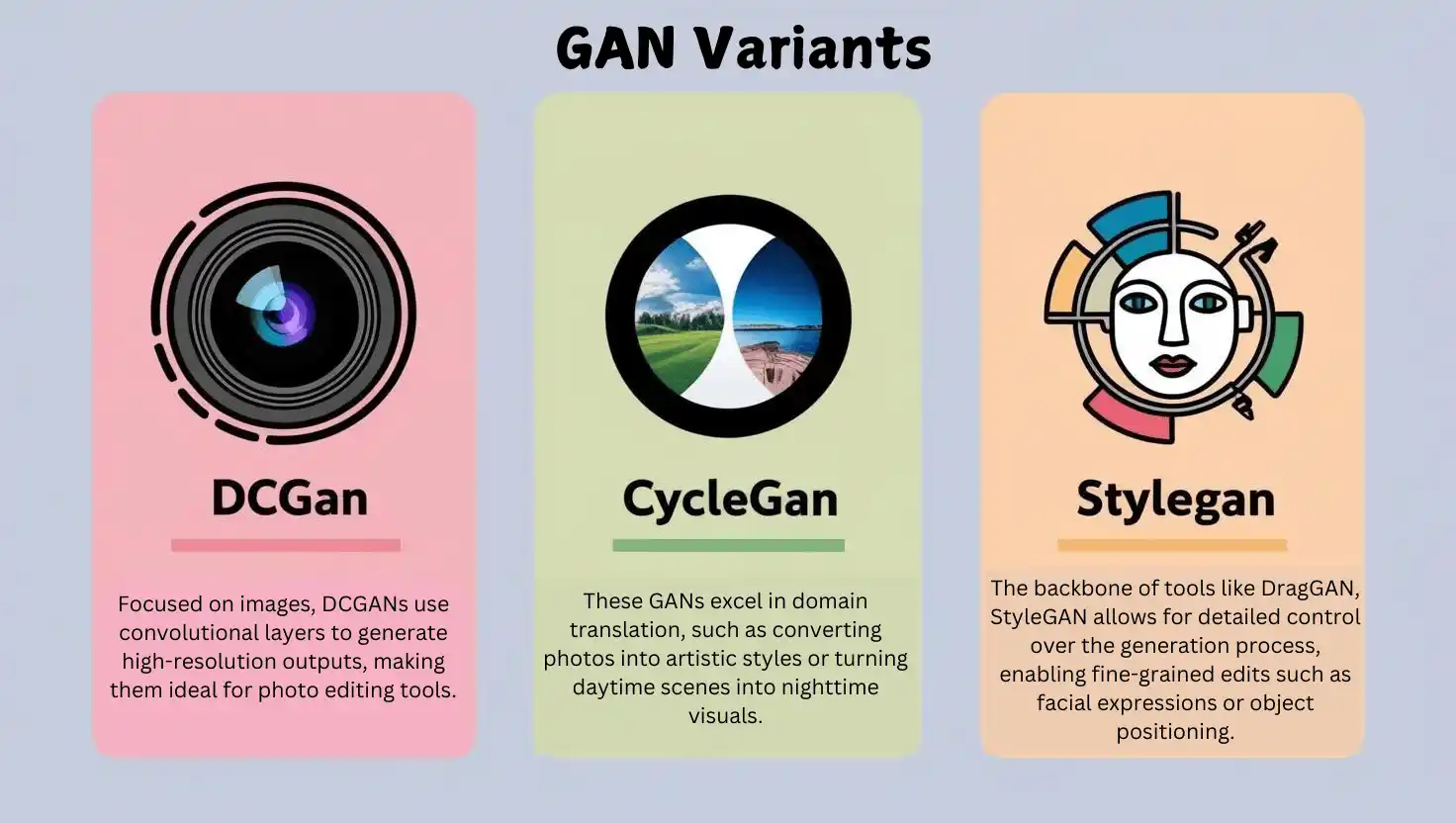
Benefits of GAN Technology
Realism in Content
GANs’ ability to produce photorealistic results is unparalleled. For instance, DragGAN AI can seamlessly blend edits into images, maintaining their authenticity.
Creative Control
By leveraging GANs, tools like DragGAN provide users with unparalleled control, from subtle tweaks to major transformations.
Versatility
The applications of GANs span multiple industries, proving their adaptability and utility.
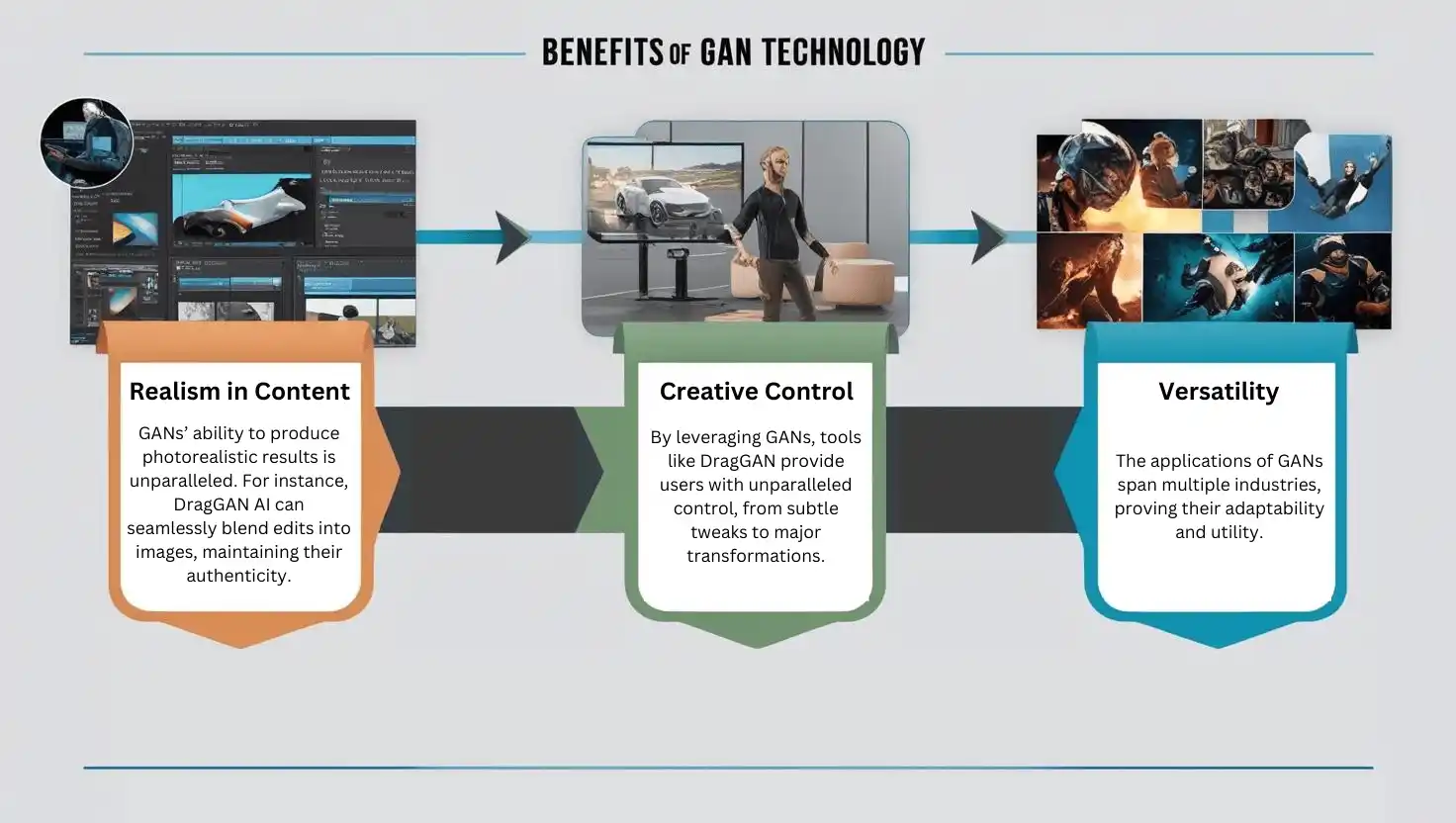
Challenges in GANs
While GANs offer numerous benefits, they also come with challenges:
Training Complexity
GANs require vast datasets and significant computational resources, making them resource-intensive to train.
Overfitting and Mode Collapse
Common issues include:
- Overfitting: When a GAN memorizes data instead of learning patterns.
- Mode Collapse: When the generator produces limited variations, reducing diversity in outputs.
Ethical Concerns
GANs can be misused to create deepfakes or deceptive content. Addressing these issues requires ethical guidelines and robust misuse detection systems.
GANs and DragGAN
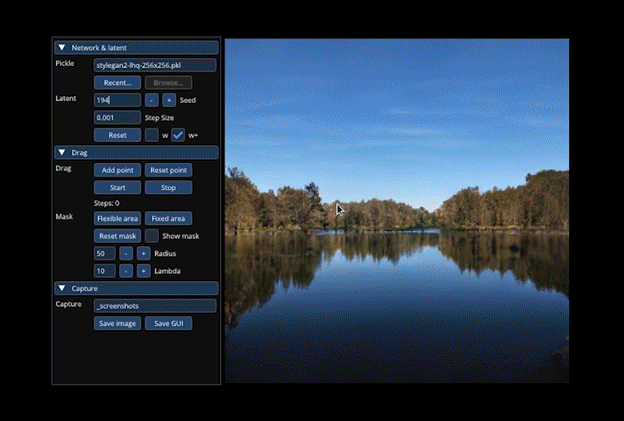
DragGAN’s Innovation
DragGAN sets itself apart by enabling users to interactively manipulate images using GAN technology. Features like pose adjustments and object reshaping highlight its unique approach.
GAN vs. Traditional Tools
Unlike traditional photo editing software, GAN-powered tools like DragGAN offer:
- Intuitive interfaces
- Faster workflows
- Superior realism in results
Future of GAN Technology
Evolving GAN Applications
The future holds immense potential for GANs, from creating hyper-realistic virtual environments to enhancing real-time video editing.
Advancements in AI
Emerging trends include:
- Improved Training Techniques: Reducing computational requirements.
- Hybrid Models: Combining GANs with other AI approaches for enhanced performance.
Impact on Industries
GANs will continue to revolutionize industries like:
- Gaming: Realistic asset generation.
- Marketing: Personalized content creation.
- Education: Interactive learning tools.
GAN technology represents a cornerstone of modern AI innovation, and its integration into tools like DragGAN AI is transforming the way we approach creativity and design. By understanding GANs, users can unlock a world of possibilities, pushing the boundaries of what’s possible in image manipulation and beyond.
